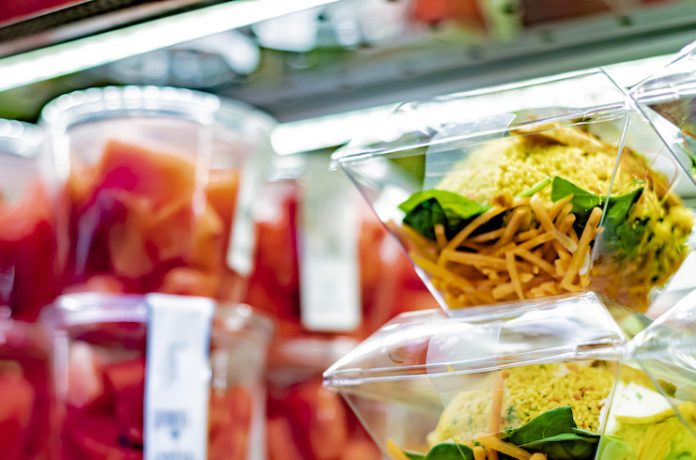
As hotels continue to move away from traditional full-service food & beverage outlets in the wake of the pandemic, Grab & Go markets or food pantries have emerged as the ‘go to’ for today’s guests.
Hotel companies and brands alike have identified these options as the best way to meet the changing demands of time-starved guests with the food items they crave. From breakfast items and light meals to healthy and nutritious snack items throughout the day, these outlets continue to gain momentum.
Dean Wendel, vp, food & beverage, Concord Hospitality—which has a portfolio of more than 150 hotels—touted the growth of these types of markets within its properties.
“Grab & Go has become an extremely important part of our daily business model. This area has benefitted greatly due to the pandemic,” he said.
Among the leading factors driving the success of Grab & Go venues are convenience and portability. For example, items like Eggo’s Grab & Go Liège-Style Waffle are designed to be eaten straight from the wrapper without being toasted so guests can take them on the go.
Richard Garcia, SVP, food & beverage, Remington Hotels—which manages more than 120 hotels in the U.S.—explained how portability has helped drive sales for the company and resulted in the Grab & Go gaining favor among guests versus more traditional F&B outlets.
“I think a lot of it is really due to guests not wanting a formal experience and being able to control when and where they’re eating. We see a lot of people going to the Grab & Go in our resorts and then just heading to the beach or heading to a relaxing area,” said Garcia.
Matt McElhare, senior director of extended-stay brands, Choice Hotels, also touted the importance of making it easy for guests.
“Convenience will always be a key in extended stay with a large portion of guests traveling for project-based assignments. Things like TV dinners and other frozen meals are always in high demand,” he said.
Whether its cereal, snacks or light meals, Wendel stressed the importance of effectively merchandising within the Grab & Go.
“Proper placement and displays are crucial. You have to have a grocer’s mentality in the markets,” he said.
Meanwhile, streamlining operations is another potential benefit of the Grab & Go as hoteliers can leverage the reduced labor requirements, according to McElhare.
“This approach has enabled our hotels to turn F&B from a cost center into a profit center and help to alleviate the labor necessary to support normal hotel operations,” he said.
Garcia reinforced the point. “We get the benefit of seeing a little more action going through the Grab & Go, which definitely helps us reduce some labor costs in the kitchen. I will tell you that at most of our hotels what we do for lunch is we tell people to go to the Grab & Go and we have a little bit more of a robust menu,” he said.
He further added that Remington continues to explore ways to become a “one-stop shop for everything” to accommodate a changing market in which guests have everything at their fingertips with services such as Uber Eats and other third-party platforms.
However, Garcia stressed that what’s offered in the Corner Pantry does vary by property and by market. “I think the approach is much more customized. Based on the hotel type we’re really looking at what kind of snacks do we put into the pantries,” he noted.
Sponsored by Kellogg’s Away From Home.










